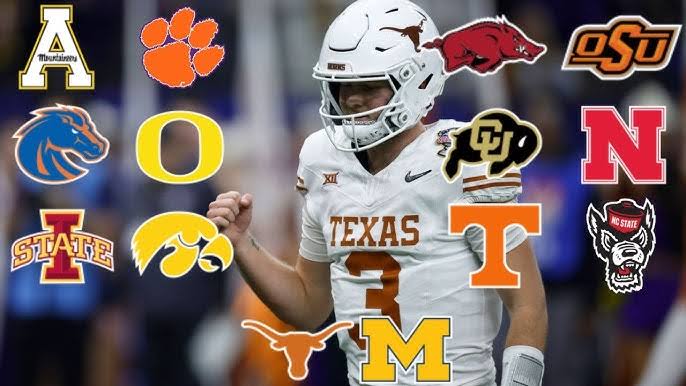College football is facing a growing crisis, one that runs deeper than ever before. The problems are multifaceted….
College football is facing a growing crisis, one that runs deeper than ever before. The problems are multifaceted and involve issues of player compensation, the balance between academics and athletics, and the increasing commercialization of college sports. These problems threaten not only the integrity of the sport but also the futures of the student-athletes and institutions involved. As college football continues to expand, both in revenue and media coverage, the cracks in its foundation have become glaringly obvious, with potential consequences that could reshape the landscape of collegiate athletics.
### The Changing Landscape of Player Compensation
One of the most significant challenges facing college football today is the issue of player compensation. The implementation of NIL (Name, Image, and Likeness) rules, which allow college athletes to profit from their personal brand, has transformed the sport in just a few short years. On the one hand, this has empowered student-athletes, giving them an opportunity to benefit financially from their talents while still in college. However, it has also introduced new problems, such as disparities in compensation among athletes and the influence of third-party entities like agents and sponsors.
The uneven distribution of NIL deals is raising concerns about fairness within teams. Star players on major college football programs are signing lucrative deals worth millions, while many others on the same team receive little to no financial benefit. This dynamic can create tension in locker rooms and undermine the traditional team-first culture of college sports. Additionally, the role of agents and outside influences in NIL negotiations adds another layer of complexity, making it more difficult for universities and the NCAA to regulate and monitor these transactions.
### Academic Integrity vs. Athletic Commitments
The balance between academics and athletics has long been a point of contention in college sports, and the situation has only worsened in recent years. College football has become a multi-billion-dollar industry, with players increasingly treated as professional athletes rather than student-athletes. The demands of the sport, especially at the top levels of NCAA Division I football, often leave little time for players to focus on their studies.
Many football programs prioritize winning and revenue generation over the academic success of their players. This focus on athletics can result in poor academic performance, particularly for players who aspire to careers in the NFL. In some cases, universities have been caught lowering academic standards or creating “shadow classes” to keep athletes eligible to play. The increasing pressure to win, driven by lucrative media deals and the expectations of fans and alumni, has further blurred the lines between academics and athletics.
This imbalance raises concerns about the purpose of college sports. If college football is primarily about generating revenue for universities and preparing athletes for professional careers, then its educational mission becomes secondary. This shift threatens to undermine the core values of higher education, turning colleges into de facto farm systems for the NFL rather than institutions dedicated to developing well-rounded individuals.
### Conference Realignment and Commercialization
Another major issue that is reshaping college football is conference realignment. Over the past decade, conferences have expanded and restructured, often with little regard for traditional rivalries or geographic logic. These moves are primarily driven by the pursuit of more lucrative television contracts and increased revenue for schools. For instance, the recent decisions of Texas and Oklahoma to join the SEC, or USC and UCLA to move to the Big Ten, reflect the growing commercialization of college sports.
While these realignments may benefit the bottom line for universities and conferences, they have alienated many fans and alumni who value the tradition and regional rivalries that have long defined college football. The loss of traditional matchups and geographic coherence has made it harder for fans to follow their teams, leading to declining attendance at games and a diminished sense of community within the sport.
Moreover, the focus on generating revenue through television deals has raised concerns about the exploitation of student-athletes. College football generates billions of dollars in revenue, much of which goes to coaches, administrators, and media companies, while the players themselves see little of this money. Although the introduction of NIL has given athletes a new source of income, it does not address the broader issue of revenue distribution within college football.
### Potential Reforms and the Future of College Football
As college football continues to grapple with these deep-rooted issues, many have called for significant reforms to preserve the integrity of the sport. One potential solution is the implementation of a revenue-sharing model, where players receive a portion of the revenue generated by the sport. This would help address the growing disparity between the profits made by universities and the compensation received by athletes.
Additionally, reforms could be made to ensure that academics remain a priority for student-athletes. Strengthening academic requirements and providing more support for athletes to balance their studies with their athletic commitments could help preserve the educational mission of college sports.
Conference realignment and the commercialization of college football are more difficult issues to address, but greater transparency and fan involvement in decision-making processes could help maintain the traditions and values that have long been central to the sport.
Ultimately, the future of college football depends on how well the sport can adapt to these challenges. If it fails to address the growing concerns around player compensation, academic integrity, and commercialization, college football risks losing its soul and becoming little more than a minor league for the NFL.


